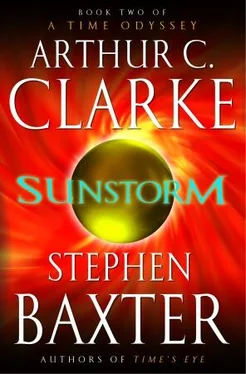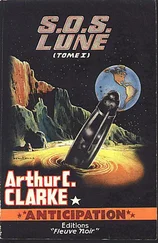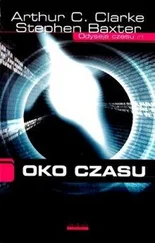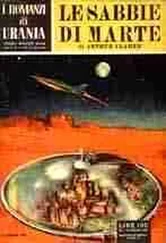“And so the date—”
“April 20, 2042, you mean?”
Siobhan regarded her. “Okay, I’ll bite. How do you know that?”
“Because there is a solar eclipse on that day.”
Siobhan raised her eyebrows. She murmured, “Aristotle?”
“She’s correct, Siobhan,” Aristotle whispered in her ear.
“Okay. But so what? An eclipse is just a lining up of sun, Moon and Earth. It has nothing to do with the sunstorm.”
“But it does,” Bisesa said. “ I was shown an eclipse, during my journey back home.”
“Your journey.” Siobhan had only glanced at Bisesa’s file. She’d come down to meet her on impulse, to get away from her teleconference for a while. Now she was beginning to regret it. “I know something of the story. You had some kind of vision—”
“Not a vision. I don’t want to use up our time discussing it. You have the files; if you believe me, you will check up on it later. Right now I need you to listen. I knew that something dreadful was going to happen to the Earth, the day I got back. And by showing me the eclipse they were telling me it had something to do with the sun.”
“They? …”
Bisesa’s face clouded, as if she didn’t quite believe it all herself—and she rather wished she didn’t have to. But she plowed on.”Professor McGorran, I believe that the sunstorm is no accident. I believe it is the result of intentional harm being done to us by an alien power. ”
Siobhan pointedly glanced at her watch. “What alien power?”
“The Firstborn. That’s what we called them.”
“We? … Never mind. I don’t suppose you have any proof.”
“No—and I know what you’re thinking. People like me never do.”
Siobhan allowed herself a smile, for she had been thinking exactly that.
“But the Army did find some anomalies in my physical condition they couldn’t explain. That’s why they gave me leave. That’s proof of a sort. And then there’s the principle of mediocrity.”
That threw Siobhan. “Mediocrity?”
“I’m no scientist, but isn’t that what you call it? Copernicus’s principle. There should be nothing special about any given location in space or time. And if you have a chain of logic that indicates there is something special about a given moment—”
“Never trust coincidences,” Siobhan said.
Bisesa leaned forward intently. “Doesn’t it strike you that the sunstorm, occurring now, is the mightiest coincidence of all time? Think about it. Humanity is a mere hundred thousand years old. The Earth, and the sun, are forty thousand times as old as that. If it were purely natural, surely the sunstorm could have occurred at any time in Earth’s history. Why should the sun blow its top now, just in this brief moment when there happens to be an intelligence running around on the planet?”
For the first time in the course of the conversation Siobhan felt faintly disturbed. After all, she’d had, independently, vague thoughts along these lines. “You’re saying this is no accident.”
“I’m saying the sunstorm is intentional. I’m saying we are the target.” Bisesa left the word hanging in the air.
Siobhan turned away from the intensity of her gaze. “But this is all just philosophy. You have no actual proof. ”
Bisesa said firmly, “But I believe that if you look for proof you will find it. That’s what I’m asking you to do. You’re close to the scientists who are studying the sunstorm. You could make it happen. It could be vital.”
“Vital?”
“For the future of humankind. Because if we don’t understand what we’re dealing with, how can we beat it?”
Siobhan studied this intent woman. There was something odd about her—something of another world, perhaps, another place. But she had an intelligent soldier’s clarity and conviction. She could be wrong in what she says, Siobhan thought. But I don’t think she’s mad.
***
On a whim she dug into her jacket pocket and dug out a scrap of material. “Let me show you what we’re actually working on right now, the problems I’m wrestling with. Have you ever heard of smartskin? …”
This was a prototype sample of the material that would some day, if all went well, be stretched over the gaunt lunar-glass framework of the shield. It was a glass-fiber spiderweb, complex and full of components, detailed on scales as small as the eye could see. “It contains superconducting wires to transmit power and to serve as comms links. Diamond fibers, too small to see, for structural strength. Sensors, force multipliers, computer chips, even a couple of tiny rocket motors. There, can you see?” The scrap, the size of a pocket handkerchief, weighed almost nothing; the little rocket motors were like pinheads.
“Wow,” Bisesa said. “I thought it was just a big dumb mirror.”
Siobhan shook her head ruefully. “That would be too easy, wouldn’t it? The whole shield won’t have to be smart fabric, but maybe one percent of it will. It’s like a huge cooperative organism.”
Bisesa touched the material reverently. “So what’s the problem?”
“The manufacture of the smartskin. The trouble is, it has to be nanotechnological …”
Nanotechnologies were still in their infancy. But nanotech, a process that built atom by atom, was the only way to manufacture a material like this, with a complexity that went down below the molecular.
Bisesa smiled. “Can I tell my daughter about this? She’s a modern sort of kid. Nanotech fairy tales are her favorite sort.”
Siobhan sighed. “That’s the trouble. In a story you throw in a handful of magic dust, and nano will build you anything—right? Well, nano will build almost anything, but it needs something to build with, and energy to do it. Nano is more like biology, in some ways. Like a plant, a nano application draws energy and materials from its environment, and uses them to fuel its metabolism, and build itself up.”
“Instead of leaves and trunks, space shields.”
“Yes. In nature metabolic processes are slow. I once saw a bamboo shoot growing at naked-eye speeds: nano is directed, and faster than that. But not much faster.”
Bisesa stroked the bit of smartskin. “So this stuff grows slowly.”
“Too slowly. There aren’t enough factories on the planet for us to churn out the quantity of smartskin we need. We’re stuck.”
“Then ask for help.”
Siobhan was puzzled. “Help?”
“You know, people always think on a big scale—what can the government do for me, how can I gear up industry to churn out what I want? But I learned, working for the UN, that the way the world really works is through ordinary people helping each other, and helping themselves.”
“What are you suggesting?”
Bisesa cautiously picked up the smartskin. “You say this stuff grows like a plant. Well, could I grow it?”
“What?”
“I’m serious. If I put it in my window box, and fed and watered it, and kept it in the sun—”
Siobhan opened her mouth, and closed it. “I don’t know. An open plant pot wouldn’t do, I’m sure of that. But maybe some reasonably uncomplicated kit would work. And maybe the design could be adapted to draw on local nutrients—”
“What does that mean?”
“From the soil. Or even household waste.”
“How would you get it started?”
Siobhan thought. “You’d need some kind of seed, I guess. Enough to encode the construction data, and to bootstrap the macro-scale growth.”
“But if my neighbor grew one, she could pass on seeds to me. And I could pass them on from my, umm, ‘plant’ to the next person.”
“And then you’d need some kind of collection system to bring the finished smartskin to some central point … But wait,” Siobhan said, thinking fast. “The total area of the shield is around a hundred thousand billion square meters. One percent of that, and a global population of ten billion—why, every man, woman, and child on Earth would have to produce, oh, say a blanket ten or twenty meters on a side. Everybody. ”
Читать дальше











